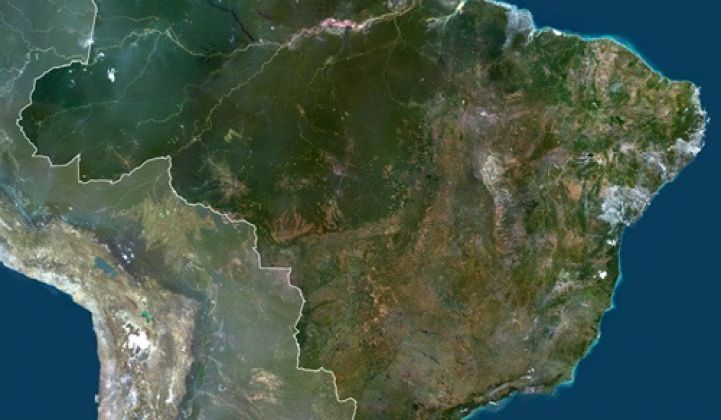Brazil’s power grid faces some huge challenges, with a vast territory to cover, endemic power theft, and technology that tends to be pretty far behind the latest advances in the industry.
And while all these factors make it a big target for smart grid vendors, the government’s decision to scale back on its nationwide smart meter mandate last year has certainly tempered expectations that it would emerge as a huge new market for North American and European vendors.
That doesn’t mean that opportunities don’t exist, however. On Tuesday, U.S. smart grid vendor Tollgrade Communications and major Brazilian metering vendor ELO Sistemas Electronicos announced a deal aimed at bridging some of the country’s technology gaps, in ways that could suit other developing nations’ needs.
Tuesday’s strategic agreement calls for ELO to sell Tollgrade’s medium-voltage sensors and LightHouse Sensor Management System (SMS) software into the Brazilian market. It’s a new move into the medium-voltage grid for ELO, which has previously concentrated on metering, both with its own technology and with partners including foreign technology vendors such as Trilliant and Echelon.
That made ELO “a natural fit for us, to work with them and extend their systems to take them to the substation and beyond,” Jim Andrus, vice president of global smart grid sales for Tollgrade, said in an interview. “They have a lot of reliability problems there, for a lot of reasons, and medium-voltage is a space where they have not had any technology deployed.”
GTM Research places Tollgrade amongst a long list of smaller DA technology providers such as GridSense, Utilidata, PowerSense, Survalent, Sentient Energy and others that have smaller, more targeted product offerings and far smaller revenues than grid giants like GE, ABB, Siemens, Alstom and Schneider Electric. The Pittsburgh, Pa.-based company has moved from telecommunications into the smart grid over its 25-year life, and works with utilities including Toronto Hydro (PDF) and Duke Energy (PDF) in the U.S. and Western Power Distribution in the U.K.
But whereas those projects are pieces of a broader set of smart grid deployments, “Brazil is really a greenfield, as far as automation goes,” Andrus said. “They haven’t invested like the North American and European utilities in legacy technology like AMR or automated switches.”
For the time being, the Tollgrade-ELO partnership is “looking at core functionality -- fault detection, load management, outage management,” Andrus said. “Down the line, I think they’re looking at doing more in the area of capacitor control, demand response, volt/VAR optimization…all of that is coming together.”
At the same time, the lessons to be learned from linking smart meters to grid sensors and analytics could lead to more partnerships like this in Latin America and other emerging markets, he said. “We’re seeing this globally too, where smart meter companies are needing to show additional value," he said. “They’re looking at what they can do on the other side of the fence, to so speak.”
This isn’t an insight lost on the rest of the world’s major smart meter and distribution grid vendors, of course. We’ve been covering the myriad projects that tie smart meters into broader grid monitoring and control systems, for everything from pinpointing and restoring outages to fine-tuning grid voltages and monitoring asset health.
Brazil is also a target of grid advances like these. Itron, Landis+Gyr, Elster, Sensus, Silver Spring Networks Siemens/eMeter and General Electric are among the U.S. and European meter technology companies with various Brazilian projects underway, and Chicago-based S&C Electric is among the distribution automation vendors serving the market. With the annual Distributech Brasil conference getting underway in Sao Paulo, we're sure to hear more announcements and new partnerships emerge from Brazil this week.



